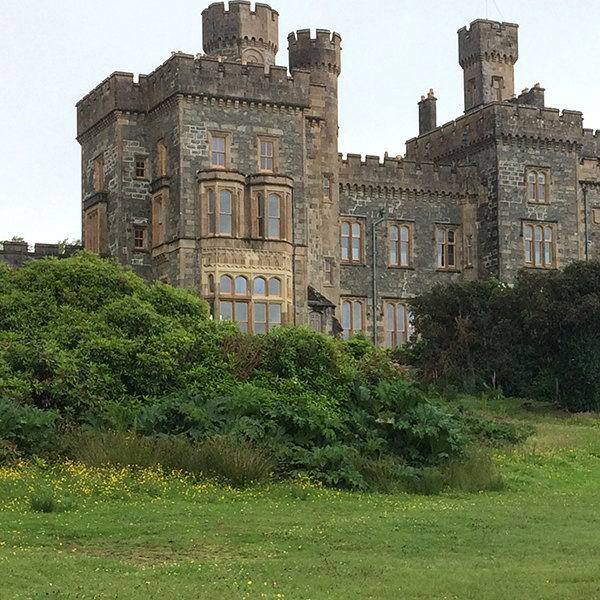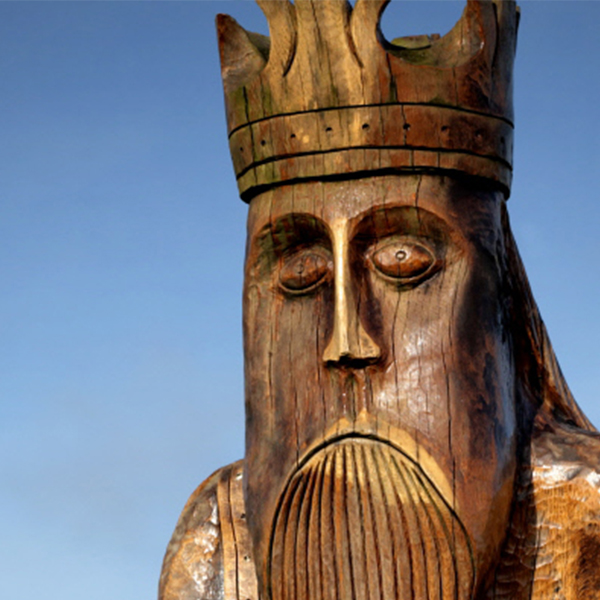The first evidence of human habitation on Lewis is found in peat samples which indicate that about 8,000 years ago, much of the native woodland was torched to make way for grassland to allow deer to graze. The earliest archaeological remains date from about 5,000 years ago. At that time, people began to settle in small homes on permanent farms rather than following their herds. The ancient stones at Callanish are a fine example of the striking great monuments of this period.
Up until about 1500 BC the island was fertile, warmer and not as wet so crofting was predictable, secure and the seafood plentiful. When the climate changed, the people of Lewis adapted but had to move to the coastal machair areas to survive. The acidic bog areas developed resulting in peat, which today remains a valuable for the islanders.
About 500BC, island society moved into the Iron Age and buildings became larger and more prominent, culminating in the brochs (hill forts) which were circular, dry-stone towers belonging to the local chieftains. The broch at Dun Carloway is the finest remaining example. These brochs were constructed mainly on the coastal fringes, from about 250 BC to 500 AD and it is thought they were built to defend themselves from other Celtic groups, as this was well before the days of the Viking raiders. The Scots are recorded as arriving from 1AD, bringing the Gaelic language with them.
From the 6th century onwards, Christianity began to make its presence felt throughout the Western Isles, mainly through the work of the Monks of St Columba. The island at this point was inhabited by the Picts, but in the 9th century AD, the stability of the island was rocked as the Vikings began to settle on Lewis after years of raiding from the sea. The Norse invaders settled in many of the coastal areas, intermarried with the local families and created farms and permanent residences. Following the Scandinavian style, the buildings began to change their form from being round to rectangular, and a few remain today; the best examples being the renovated Mill and Kiln near Shawbost, and Liamshader near Carloway. The Vikings also left a very important set of artistic relics in the world-famous Lewis Chessmen which were reportedly dug up by cows in the dunes of Uig Bay in 1831. The real impact of the Vikings was on the environment as they were heavy users of timber and relied on it for their houses, boats and fuel. The native woodlands were finally and seriously reduced by a Viking leader called Magnus III who instigated a ‘scorched earth’ policy. The Vikings influenced the building techniques for years to come and elements of Viking construction can be seen in the traditional ‘blackhouse’, fine examples of which are in the restored Blackhouse Village of Gearrannan
The Viking era came to an abrupt end after the Battle of Largs in 1263 when King Haakon IV of Norway was defeated by King Alexander III of Scotland. Within three years, Lewis (and the rest of the Western Isles) once again became part of Scotland, following the Treaty of Perth when all of Norway’s lands in the West were returned to Alexander. This political change probably meant very little to the well-settled Viking farmers who by now must have been well integrated into the island, but it meant several clan families, in particular Clan Nicholson, were now able to establish themselves under the new Scottish regime. By the 14th century, the most powerful chiefs of the Macdonald clan, known as the Lords of the Isles, emerged as the most important power in north-western Scotland and ruled the islands like an independent kingdom, frequently coming into conflict with the Scottish kings. The clan Macleod were their staunchest supporters on Lewis and as a result became the most influential of the Lewis clans and took control of the island. By this stage the people were of mixed Viking and Celtic origin, some of them with traceable names from Norse leaders like ‘Leod’ – his sons were therefore ‘Sons of Leod’, or MacLeod. Probably the most noticeable trace of this ancient fusion is the enchanting soft lilt dialect of the modern people of Lewis.
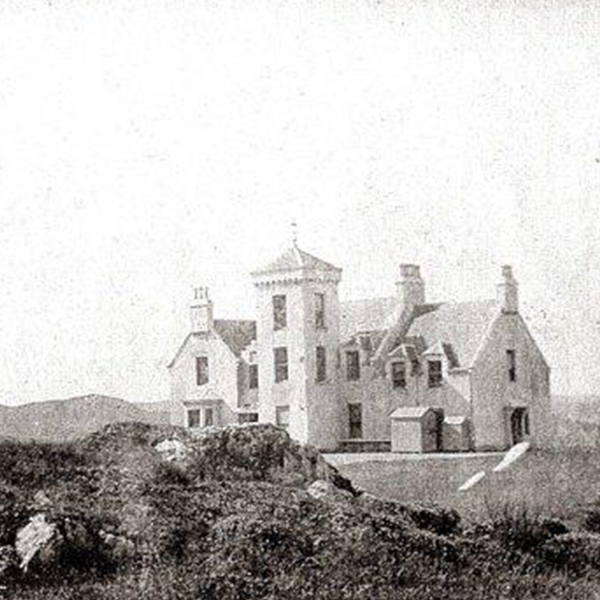
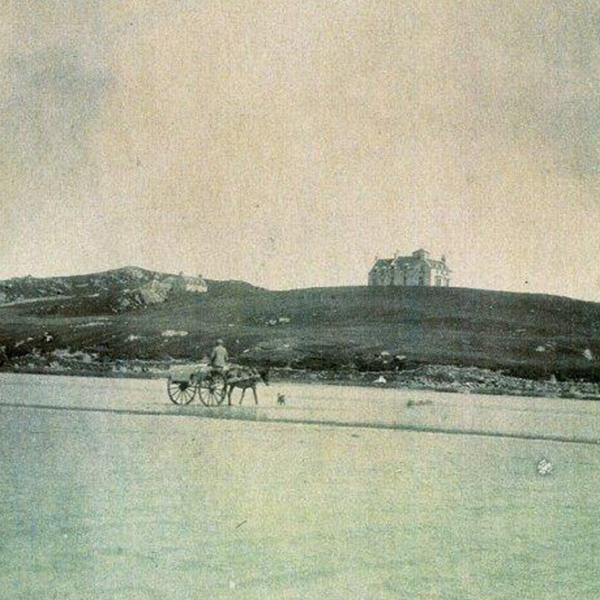
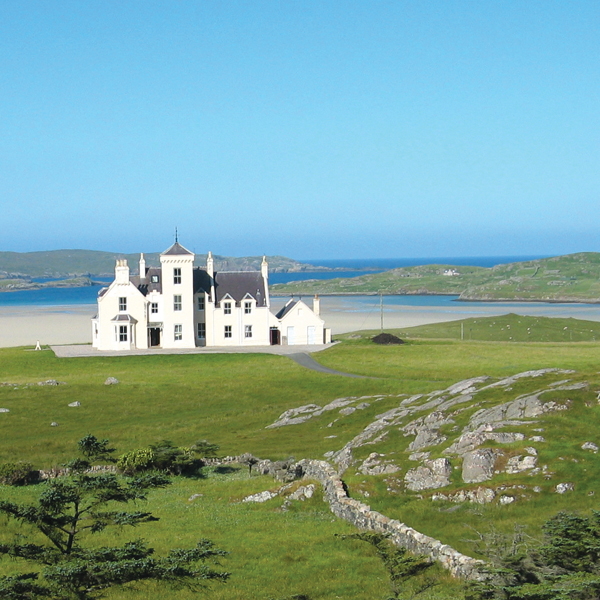
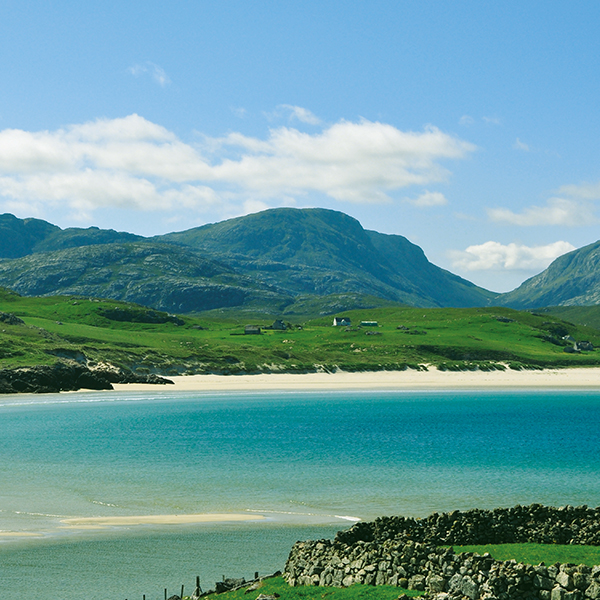
After years of feuding between and even within local clans, the land of clan Macleod was forfeited to the crown in 1597. In an attempt to anglicise the islands, King James VI leased the land to a group of lowland businessmen known as the Fife Adventurers. However the adventurers were unsuccessful and driven off by the Macleod’s, so in 1609 James VI granted Lewis to the Mackenzie’s of Kintail who ran their estates from afar. Clan Mackenzie controlled the island for 2 ½ centuries until 1844.
From 1661, Lewis became part of Ross-shire and was administered from distant Dingwall, an arrangement that was to last until the creation of the Western Isles Council in 1975. Following the 1745 Jacobite rebellion and Prince Charles Edward Stewart’s flight to France, the use of Gaelic was discouraged, rents were demanded in cash rather than kind, and the wearing of folk dress was made illegal. Emigration to the New World increasingly became an escape for those who could afford it during the latter half of the century. While land clearance decimated the population as a whole, it led the town of Stornoway to grow. The focus of the town’s development was the harbour and in the 1800s the boom in herring fishing and the opening of ferry links from the mainland did much to open up Lewis to trade.
In 1844 Lewis was sold by the Mackenzie’s to Sir James Matheson for £190,000 who set about building roads, training islanders, establishing a daily postal service and building Stornoway’s Lews Castle. In 1878 Sir James Matheson died, leaving the Lewis estate to his widow. Unsympathetic to the plight of the crofters, and refusing every application from landless families for permission to re-occupy some of the former crofting villages, Lady Jane Matheson owned Lewis during the height of the agitation for Land Law Reform. The 1880s saw land raiding and subsequent famine, forcing vast numbers off their lands, and once again increasing the flood of emigrants. By the end of the 19th century, the whole of Lewis was seriously congested, with almost as many landless and homeless families living in barns and temporary accommodation, as there were official crofters with land on lease. Crofter agitation for Land Law Reform continued in a determined way.
During the First World War, thousands of islanders served in the forces, many losing their lives, including 201 Lewis men who were returning home after the war when the Admiralty yacht HMY Iolaire, sank within sight of Stornoway harbour.
In 1911 the Smallholders (Scotland) Bill was finally passed. The 1911 Act broke new ground in that it recognised that Highland landowners would never make a genuine attempt to make the land available to the indigenous population. The Act therefore introduced, for the first time ever, compulsory powers to the Scottish Secretary to acquire land for the creation of new crofter landholdings. The passing of the 1911 Act brought about a strong feeling of optimism among the landless families. They felt that at long last the Act heralded the beginning of a new era of justice for the crofter population, and the Secretary of State for Scotland began to actively prepare scheme for land settlement under the new terms. Although the consent of the landowners was not necessary, Major Matheson (the last of the Matheson dynasty) opposed the resettlement scheme and the Government’s intention of splitting the Lewis farms. This slowed any progress and then in 1914 the Second World War broke out and all settlement schemes were temporarily shelved. Many servicemen from Lewis served in the Royal and Merchant Navy during the Second World War and again, many lives were lost.
In 1918, facing financial difficulties, Matheson decided to sell his Lewis Estate to Lord Leverhulme for £167,000 which was well below the asking price of £200,000. Lord Leverhulme did not see any merit in crofting and felt the wealth of the island lay in the sea and not the land. He had great intentions of making Stornoway an industrial town and in particular building the fishing industry, and at first his intentions were received well by the islanders. However, the weary servicemen returned from war and began to realise that Lord Leverhulme was refusing to co-operate with the Scottish Office over the land resettlement scheme. Suddenly their cherished dreams of their own small holdings on which they could build a home for their long-suffering families were shattered. For the islanders crofting was their future, so the prospect now was to continue living in their barns and sub-standard accommodation, or to protest.
In an effort to force the creation of more crofts, “land raiders” started settling on Leverhulme’s farmland near Stornoway. The ex-servicemen told Leverhulme at a large open-air public meeting that, “We fought for this island in France, and if necessary we will fight for it in Lewis as well.” In the face of more occupations of his land, the failure of his fishing industry and financial difficulties with his worldwide business empire (Lever Brothers), he announced in 1923 that he was giving up Lewis and offering it to its people free of charge. The Stornoway Town Council decided unanimously to accept Leverhulme’s offer of Stornoway Castle and all his other properties in Stornoway. The Stornoway Trust was formed to administer the property including the crofters’ land within the Parish of Stornoway. Leverhulme generously offered the remaining crofters’ land as a free gift to the Lewis District Council, but they declined the offer on the basis the income did not outweigh the expenditure. Lewis’s people therefore lost the magnificent opportunity to be their own landlords, and in the circumstances Leverhulme had no alternative but to sell the Lewis Estate, less the Parish of Stornoway. In the economic depression that existed in the early 1920s there was little or no demand for land estates, and eventually the island was parcelled up into various small estates and sold off with difficulty in some cases. After opening the Lewis War Memorial near Stornoway, Lord Leverhulme left the island for the last time on 5th September 1924 and died the following year. The people of Lewis and Harris were sad to hear the news. Those of them that had crofts were glad to have something to fall back on, but sadly there were still many landless families, and the 1920s and 1930s was a lean time for everybody.
Lewis today remains a very special island with a rich history behind it and a strong Presbyterian tradition. Life is still very different to mainland Scotland with Sabbath observance, the Gaelic language and peat cutting retaining more importance than elsewhere. The traditional industries of crofting, fishing and weaving, although historically important, are sadly in decline and crofting in particular is little more than a subsistence venture today. 40% of today’s working population is employed by the public sector. The Harris tweed industry is today focused in Lewis with the major finishing mills in Shawbost and Stornoway. The decline of popularity of the Harris tweed jacket has affected the industry, but the quality of the hand woven cloth is timeless and the weavers continue to produce new designs each year. The main fishing fleet is somewhat reduced from its heyday, but together with fish farms and the onshore processing and transportation, the fishing industry as a whole is still a major employer.
Life in Stornoway continues to revolve around its busy harbour which is occupied by fishing and freight vessels, as well as visiting boats and ferries. This is an island capital unlike any other, one of the major cultural centres on the remote and unique Hebridean archipelago and the proud torchbearer of the ancient Gaelic civilisation. It is no surprise that tourism is Lewis’s growing industry as people continue to discover this wonderful island.
Uig Lodge was built in 1876 by Sir James Matheson. It then came under the ownership of Lord Leverhulme when he bought the island. Lord Leverhulme gifted the lodge as a wedding present to his niece, Emily Macdonald.
The lodge later passed into the Dobson family. The lodge later was run as a hotel for 4 years in the 1970’s before being bought by Malcolm and Barry Green in 1981. Dickon and Elly Green took over the lodge in 2011 and live in the Keeper’s House with their 4 children.
